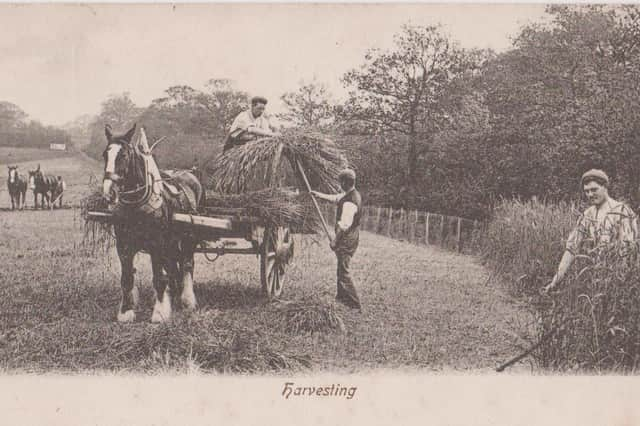Horses tethered to Clydesdale's history


When the horse first appeared in Clydesdale is an interesting question.
The earliest evidence is from the Iron Age Hill Fort on Cairngryffe, where, in 1939, archaeologist Gordon Childe found a terret – a loop attached to a chariot for the horses’ reins.
Advertisement
Hide AdAdvertisement
Hide AdIt may have belonged to a member of the Damnoni, a tribe active in the late Celtic Iron Age – 200 BC to 400 AD.
The Romans certainly brought horses to the fort at Castledykes near Corbiehall farm. Evidence has been found from aerial photographs that Agricola’s army brought horses with them in 79 AD as the photographs show that the marching camp was split to provide accommodation for the auxiliary cavalry.
These units were certainly based at Castledykes until about the time of the Emperor Commodus c.190 AD.
The aerial photos show field systems around the fort and horses may have been bred alongside sheep and cattle to supply the Roman Army in Scotland.
Advertisement
Hide AdAdvertisement
Hide AdDuring the Wars of Independence horses again played a major role. The English forces in 1298 had retaken Lanark from the Scots and were based there at the time of the battle of Falkirk. Many English knights put in for compensation for horses that had died at the battle or had come back to Lanark badly wounded.
The date 1570 is important for Lanark as the cornets first rode to inspect the boundary stones of the Burgh of Lanark. This tradition became part of Lanark’s Lanimer traditions.
The development of the Clydesdale breed occurred in the late 18th century when John Paterson of Lochlyoch farm crossed a stallion from the Low Countries with a mare belonging to the Duke of Hamilton.
The first progeny was the Lampits Mare in 1806 but the name Clydesdale was not in common use until 1827. By the end of the 19th century, Clydesdales were attracting good money.
Advertisement
Hide AdAdvertisement
Hide AdThe last major contribution made by the Clydesdale was their use in World War One for pulling artillery pieces; some 1000 were used.
Their popularity has continued due to the Clydesdale Horse Society which has promoted the breed. Many members of this Society are to be found not only in Scotland but in the USA and Canada.
The importance of the Clydesdale Horse is not going to be forgotten as Sylvia Russell has written a small book about them and is currently raising money for a statue of a Clydesdale Horse to be erected by Lanark Auction Market, a fitting tribute to these magnificent animals.